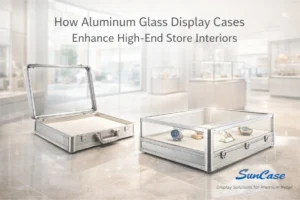The Differences Between EVA and ATA Cases

The main difference between EVA and ATA cases is in the type of protection. ATA cases are built tough for heavy-duty gear, while EVA cases keep things light and flexible. Each one’s designed with a different journey in mind.
You’ve got some delicate equipment to transport. Could be your DJ gear, tech setup, or maybe some sensitive instruments.
Now, you’ve got two options for keeping it safe: an EVA case or an ATA case.
Both offer protection, but the type you choose depends on what you need. Understanding the differences will help you pick the right one for your gear.
EVA and ATA Cases Head-to-Head
Both EVA and ATA cases offer solid protection, each with strengths suited to different needs. Here’s a look at how they stack up on various fronts to help you decide.
Durability

ATA cases are built to last through rough conditions. They use materials like plywood and aluminum to protect larger, bulkier gear from heavy impacts. If you’re shipping industrial equipment or something that requires serious protection, ATA cases handle it well.
EVA cases, meanwhile, are lighter but still durable enough for everyday use. They’re perfect for smaller, sensitive items—things like cameras, tablets, or audio mixers. Our EVA DJ controller case, for example, keeps your essentials safe without the added bulk.
Customization
EVA cases offer you the chance to customize to fit specific gear. Say you’re a photographer with multiple camera bodies, lenses, and accessories—you can mold the interior to hold each piece securely..
Want a unique look? You can select specific colors or add logos to showcase your brand. EVA cases give you options that go beyond basic protection, making them ideal for items that need a personal touch.
ATA cases, on the other hand, focus on standard setups. They’re built tough and work well for large, heavy equipment but aren’t as flexible for personalization. If custom features are a priority, EVA cases offer more ways to get the exact setup you need.
Size and Weight

EVA cases keep things compact and easy to carry. You can count on them to protect your gear without the extra heft. They also slip neatly into tight spaces—perfect for photographers fitting gear into packed vehicles or DJs managing tight setups at events.
ATA cases are larger and built for durability. They’re designed for heavy-duty equipment that may take a beating along the way. If you’re moving serious gear and need maximum protection, ATA cases are made for the job.
Protection Level
ATA cases offer industrial-grade protection, meaning they can handle rough treatment without compromising your gear. Built for long hauls and heavy impacts, they’re perfect for high-value items like industrial tools or audio equipment that can’t risk damage along the way.
EVA cases, on the other hand, provide reliable everyday protection. They’re ideal for delicate gear like cameras, tablets, or mixers, keeping them safe from everyday bumps. If you need light but dependable security for regular travel, EVA cases are an ideal choice.
Which Is The Right Case for Me?
Choosing between EVA and ATA depends on how you’ll be using the case and what kind of protection you need. Here’s a quick guide to help you decide which might be the better fit for your situation:
| Scenario | EVA Case | ATA Case |
| Moving photography gear to on-location shoots | ✅ | |
| DJ equipment for frequent gigs | ✅ | |
| Medical tools or sensitive tech equipment | ✅ | |
| Shipping industrial tools or bulky items | ✅ | |
| Audio equipment for regular event setups | ✅ | |
| High-value, fragile equipment needing long-term storage | ✅ |
This guide should give you a sense of which case will work best for your specific needs.



